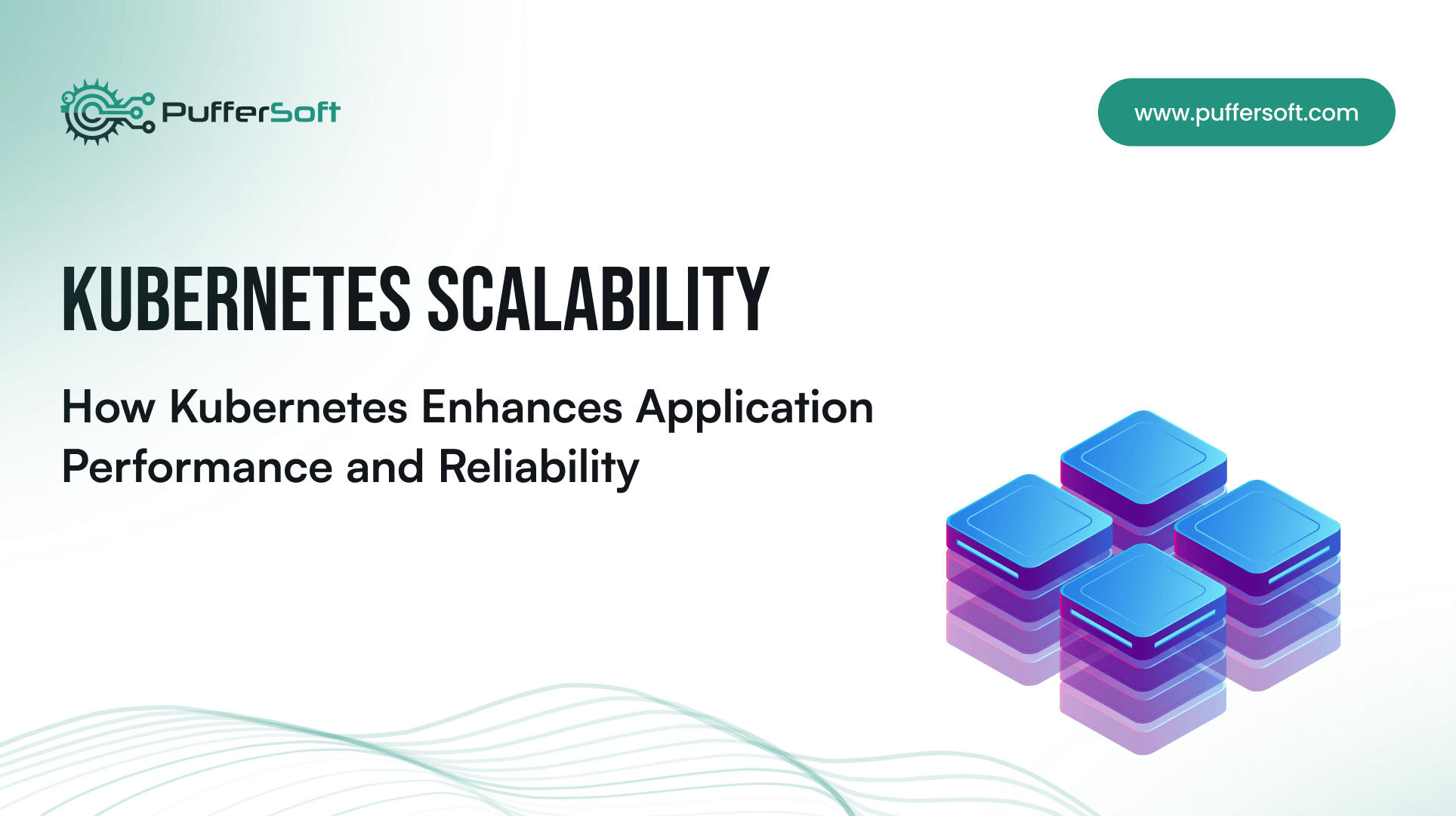
Kubernetes Scalability: How Kubernetes Enhances Application Performance and Reliability
In today’s fast-paced digital world, businesses need applications that can handle unpredictable workloads, recover from failures automatically, and maintain consistent performance 24/7. Traditional deployment methods often fall short in delivering this level of flexibility and resilience. Kubernetes, the leading open-source container orchestration platform, addresses these challenges by automating deployment, scaling, and recovery processes. It creates a unified environment where containerized applications can run reliably, scale efficiently, and self-heal when failures occur.
Understanding Kubernetes and Its Core Function
Kubernetes manages applications as collections of containers grouped into logical units called pods. It continuously monitors the health of these pods and ensures the system matches the desired state defined by the user. If a pod fails or a node becomes unavailable, Kubernetes automatically replaces or reschedules it on a healthy node to maintain uptime and stability.
The architecture of Kubernetes consists of a control plane and worker nodes. The control plane maintains the cluster’s desired state, while the nodes host and run containerized workloads. Through declarative configuration files, users define the desired system state, and Kubernetes ensures it operates accordingly.
Enhancing Kubernetes Scalability with Automation
Kubernetes scalability refers to the platform’s ability to handle increased workloads by efficiently utilizing additional resources. Kubernetes excels in this area through automated and dynamic scaling mechanisms that respond to real-time demand.
One of the most powerful features for Kubernetes scalability is the Horizontal Pod Autoscaler (HPA). It automatically adjusts the number of running pods based on resource usage, such as CPU or memory utilization. When demand spikes, more pods are created; when demand drops, excess pods are terminated to save resources. For example, an online learning platform can scale up during exams and scale down afterward.
In addition to horizontal scaling, Kubernetes supports Vertical Pod Autoscaler (VPA), which dynamically adjusts CPU and memory for existing pods. This ensures optimal performance without manual intervention. The Cluster Autoscaler further enhances Kubernetes scalability by adding or removing worker nodes based on cluster-wide resource availability. If nodes run out of capacity, new ones are provisioned automatically; when demand subsides, unused nodes are removed to reduce costs.
Built-in load balancing also plays a critical role in scalability. Kubernetes Services distribute incoming traffic evenly across healthy pods, preventing overload and ensuring efficient resource utilization. The Ingress Controller improves scalability by managing external access, routing requests, and handling SSL termination.
Kubernetes encourages stateless application design, allowing pods to be created or destroyed without data loss. For applications requiring persistent storage, StatefulSets maintain stable identities and persistent volumes, ensuring both flexible scaling and data consistency.
Achieving Reliability Through Self-Healing and Fault Tolerance
Reliability means a system continues to operate correctly even when components fail. Kubernetes ensures high availability and fault tolerance through self-healing, monitoring, and controlled deployment strategies.
At its core, Kubernetes offers self-healing capabilities. It constantly monitors pods, nodes, and containers to detect failures. If a container crashes, Kubernetes restarts it; if a pod becomes unhealthy, it replaces it; and if a node fails, workloads are rescheduled to healthy nodes. This minimizes downtime and ensures continuous service.
Liveness and readiness probes monitor application health at the container level. Liveness probes restart unresponsive containers, while readiness probes ensure traffic only reaches fully ready containers. Together, they maintain service stability.
Rolling updates and rollbacks allow new application versions to deploy without downtime. If an issue occurs, Kubernetes rolls back to the last stable version, ensuring uninterrupted service. Resource quotas and limits prevent resource exhaustion, ensuring fairness and stability across workloads.
For even greater reliability, Kubernetes supports multi-node and multi-zone deployments, keeping applications available during failures or outages.
Conclusion
Kubernetes revolutionizes modern infrastructure by automating deployment, scaling, and recovery. With advanced features like autoscaling, self-healing, and rolling updates, it ensures continuous uptime and reliability. Kubernetes scalability & Observability empowers organizations to deliver high-performance, highly available applications that adapt seamlessly to changing workloads. From e-commerce platforms to enterprise systems, Kubernetes provides a resilient foundation for building efficient, cloud-native, and future-ready applications.

